Contents
TOPICS
2024.5.10
After the supervision of “Earth” (Japanese Edition)
Interview with Prof. Yasufumi Iryu, Advanced Institute for Marine Ecosystem Change (WPI-AIMEC)
Interviewer: Kugako Sugimoto, Advanced Institute for Marine Ecosystem Change (WPI-AIMEC)
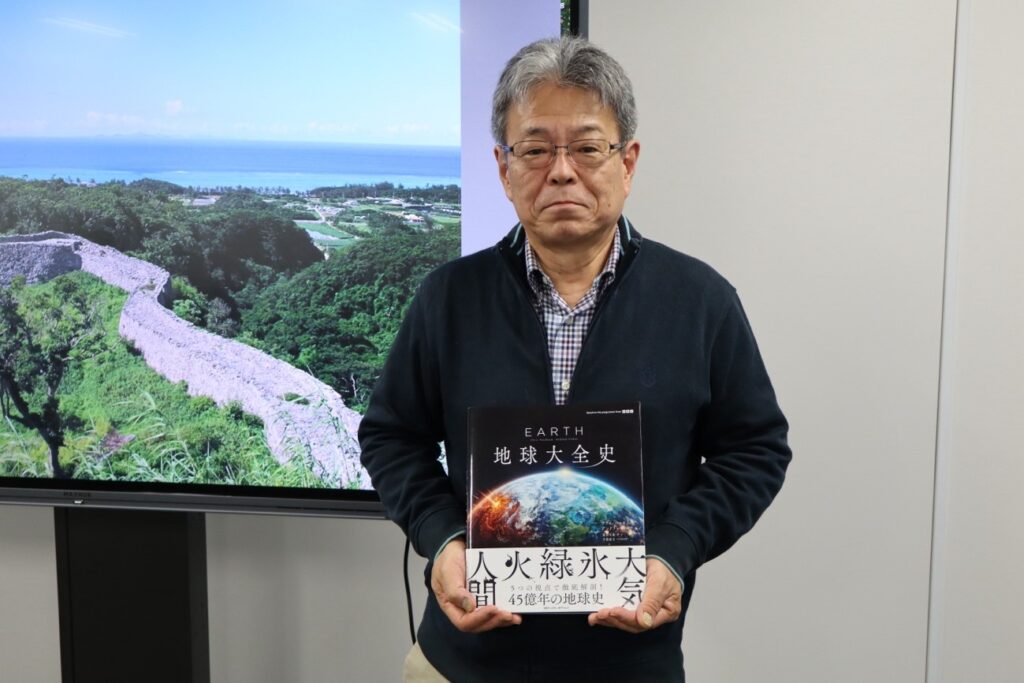
Summary and Features of this Book
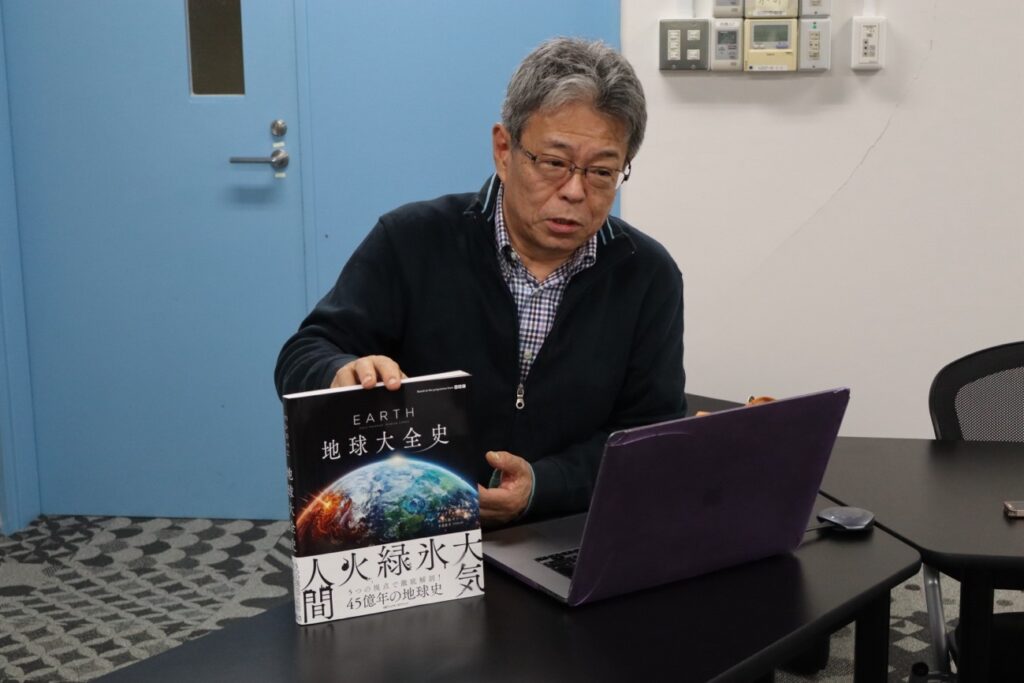
The unique feature of this book lies in its approach to geological eras through various stages of Earth’s development: the era of “atmosphere” when Earth was first formed, the era of “water” when water eventually formed and there were periods of global freezing, the era of “green” when plants emerged on land and flourished, the era of “fire” characterized by vigorous volcanic activity, and finally, the era referred to as “human,” representing mammals, with humans being the most emblematic of them. For example, while many books on Earth’s history focus on popular dinosaurs, this book dedicates considerable pages to plants, which are often overlooked in other works. It balances detailed sections with concise ones, reflecting the author’s unique perspective and passion for Earth’s history. Moreover, the book features stunning photographs provided by National Geographic, including meticulously captured images such as microscope photos processed to clearly show specific bacteria, and drone photos of islands I personally visited. These photographs were taken with great care and attention to detail.
Target Readers
This book aims to provide an accessible explanation of Earth’s history, but it’s best enjoyed and understood by readers with a certain level of geological knowledge, making it suitable for university general education courses or undergraduate textbooks. It delves into geological events that are not widely known in Japan, such as the Carnian Pluvial Episode (Late Triassic), in detail. Especially for students, it can be challenging to find and read through numerous academic papers to systematize knowledge, so I hope this book can serve as an introductory guide, allowing them to progress to more specialized studies. Additionally, I think it would be incredibly beneficial for Earth science professionals who are not specialized in geological history.
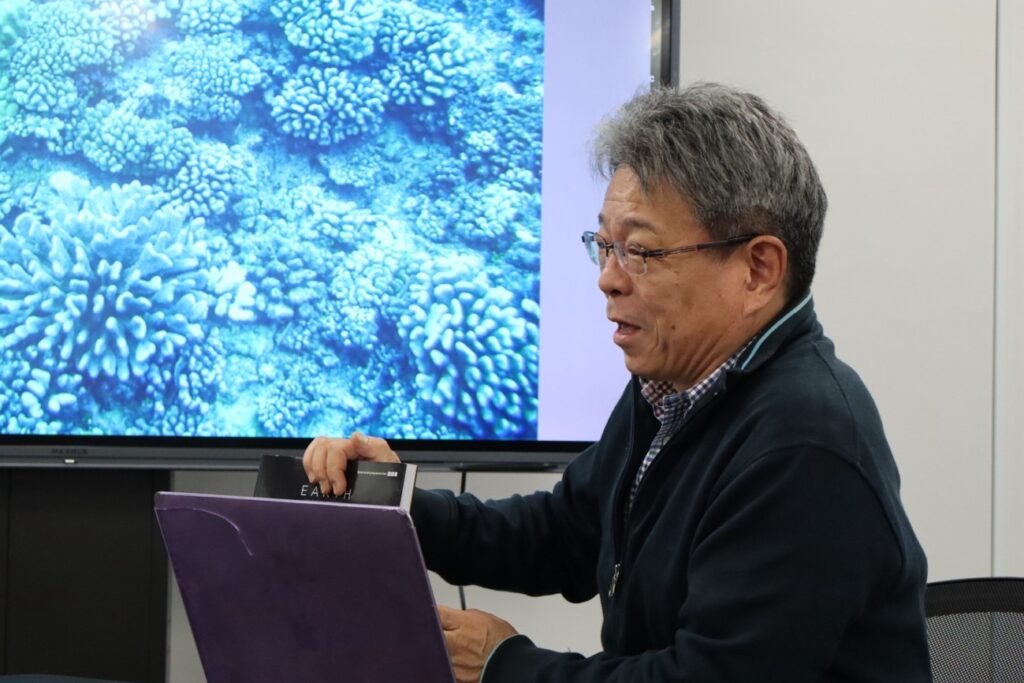
My specialty, carbonate sedimentology, and my tasks in supervising of “Earth”:
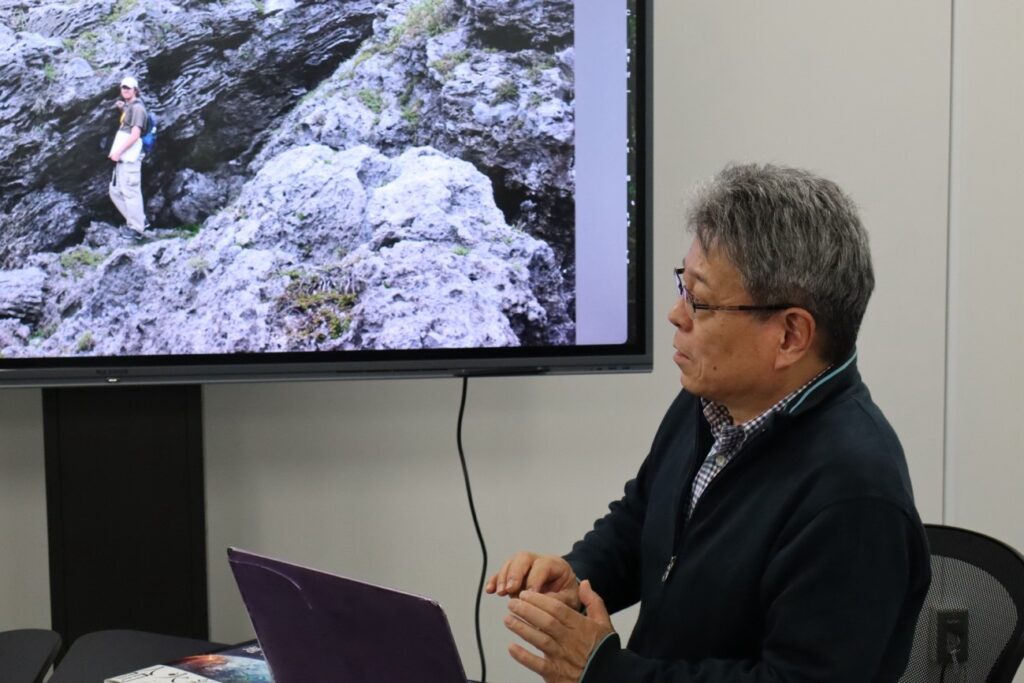
My specialty in carbonate sedimentology involves analyzing the shells of organisms and naturally deposited calcium carbonate in the ocean to decipher Earth’s history. A significant portion of the Earth’s history presented in this book was elucidated through the analysis of carbonate sediments. Through my role as a supervisor, I rekindled my appreciation for the importance of my research field and felt proud.
There are numerous theories for every event in Earth’s history. Simply listing these theories does not create a story, which is essential for a book on Earth’s history. Therefore, the author must select theories carefully. The danger lies in authors pretending to understand theories they don’t fully comprehend and selecting theories based on personal preference to construct a plausible narrative. This poses a risk of spreading misinformation due to the vulnerability inherent in freely written science books, rather than peer-reviewed papers that undergo content checks. As a supervisor, my foremost responsibility was to meticulously check for any scientific inaccuracies in the content of this book. While there were moments where I disagreed or found certain passages questionable, I respected the authors’ perspectives. Additionally, I ensured that the Japanese language used throughout the book was both accurate and natural-sounding.
Thoughts from supervising
Through my experience as a supervisor, I’ve gained insight into the process of translating scientific research into a narrative for publication. As a researcher in Earth sciences, I’ve communicated my findings through academic papers. The authors of this book, however, are not researchers themselves. Yet, they have diligently read and comprehended the vast array of papers on Earth’s history, shaping them into a cohesive “story” for publication. This experience of supervising has allowed me to understand how individuals outside the realm of research interpret and construct narratives from scientific papers.
Furthermore, when I first reviewed the translated manuscript in Japanese, I was deeply impressed by the accuracy and beauty of the translation. It was a revelation to see how translators can craft such precise and elegant translations. In an era where AI-driven automatic translation is prevalent, I realized the incomparable quality of professional translation?a task that AI still cannot match in terms of excellence.

My favorite photo in this book
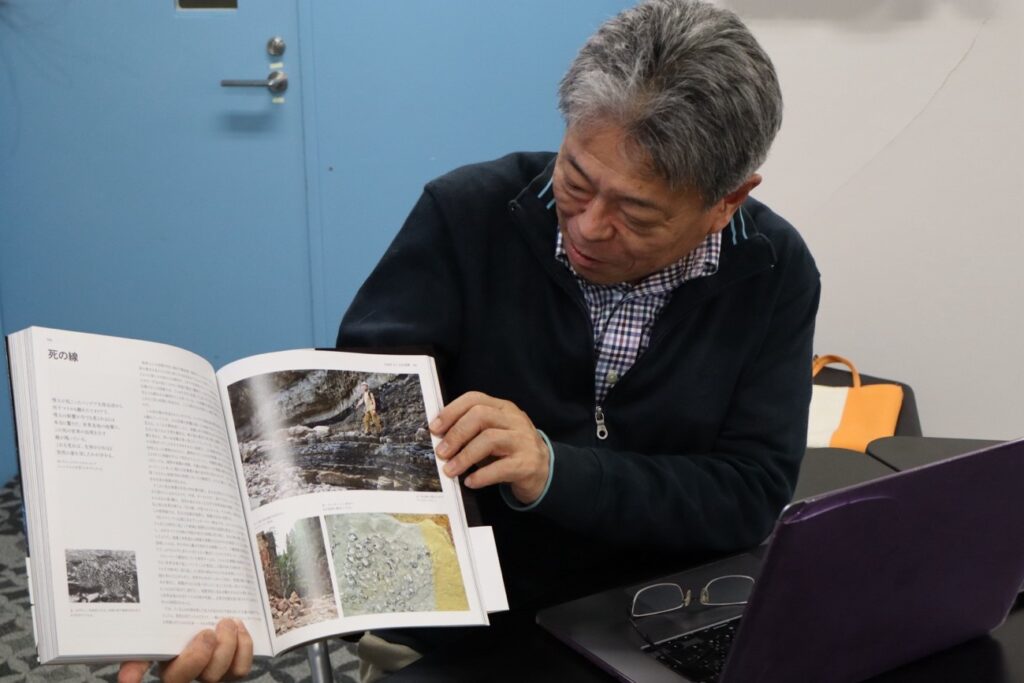
My favorite photo in this book is one where a researcher is pictured in front of a rather unremarkable, dark cliff (on the “line of death” page). It’s not Instagram-worthy, not panoramic, nor does it feature any striking or peculiar landscapes. However, this area’s rock layers hold records of significant events in Earth’s history. Earth’s history is woven together from meticulous analysis by numerous researchers of samples collected from various locations worldwide. While picturesque settings are ideal, more often than not, these significant locations are just mundane cliffs or valleys. Just like this photo. From my own experience, I also have had important discoveries on plain cliffs or coastlines rather than panoramic vistas. Strangely, new discoveries often come on days when you least expect them, rather than on days filled with enthusiasm. It’s important not to be too eager.
The post-interview reflection (by Sugimoto)
Among the photos taken during Prof. Iryu’s field research, which were prepared as reference for this interview, there was a photograph of researcher looking at us in front of an ordinary, dark-colored rocky area. This photo is remarkably similar to the one that Prof. Iryu liked the most among the pictures in the book “Earth”. I wondered whether this similarity was a rare coincidence or if it was a type of photo commonly taken in geological field research. By the way, the final editing process was carried out during the New Year’s holidays of 2024, where Prof. Iryu secluded himself for about two weeks. This period of seclusion coincided with the final push for his daughter’s entrance exams, and both of them were fervently working during the New Year holidays. Then, this spring, the book was published, ranking high in the history department of Amazon’s popular gifts, and his daughter successfully passed the exams.

